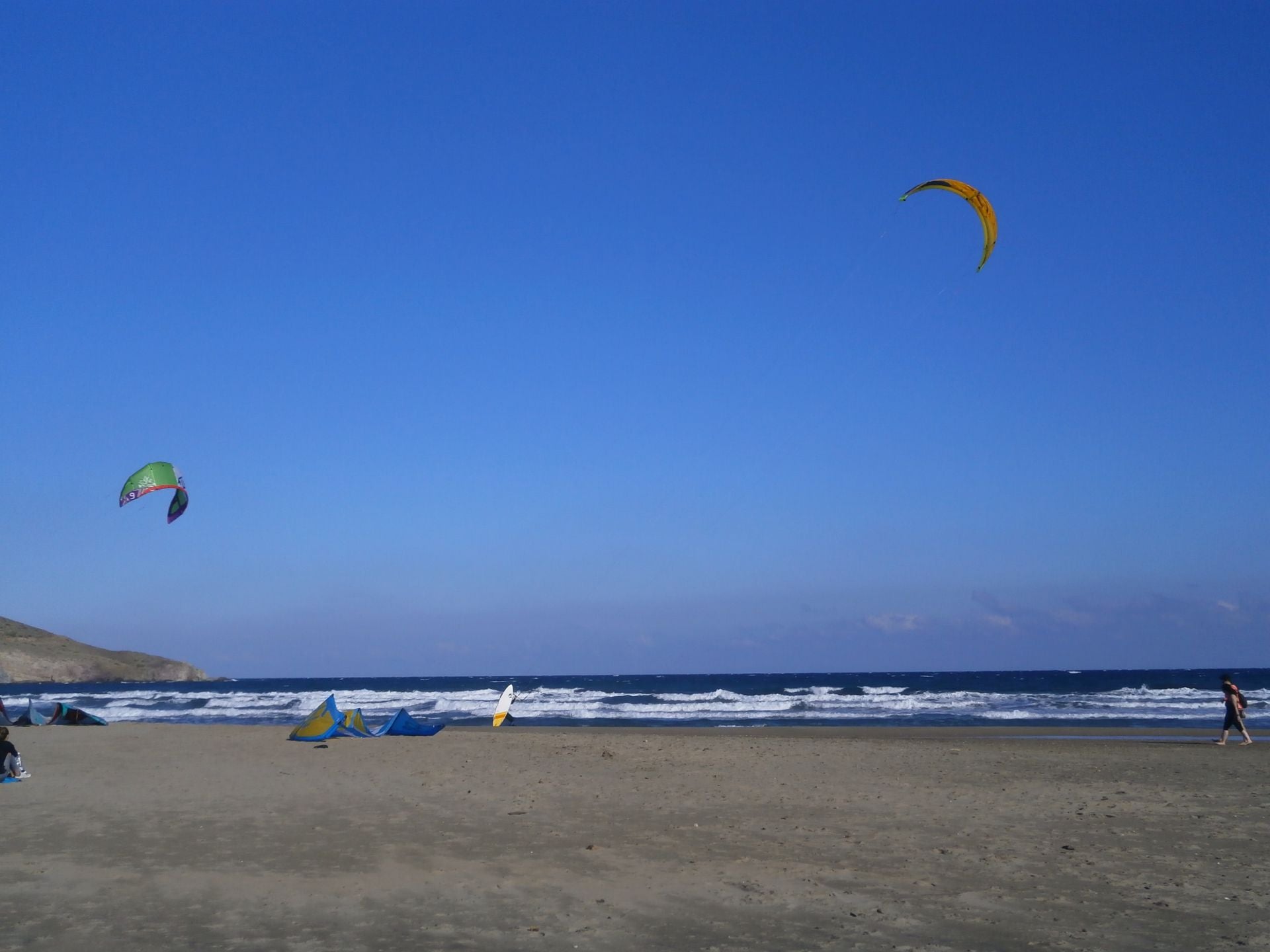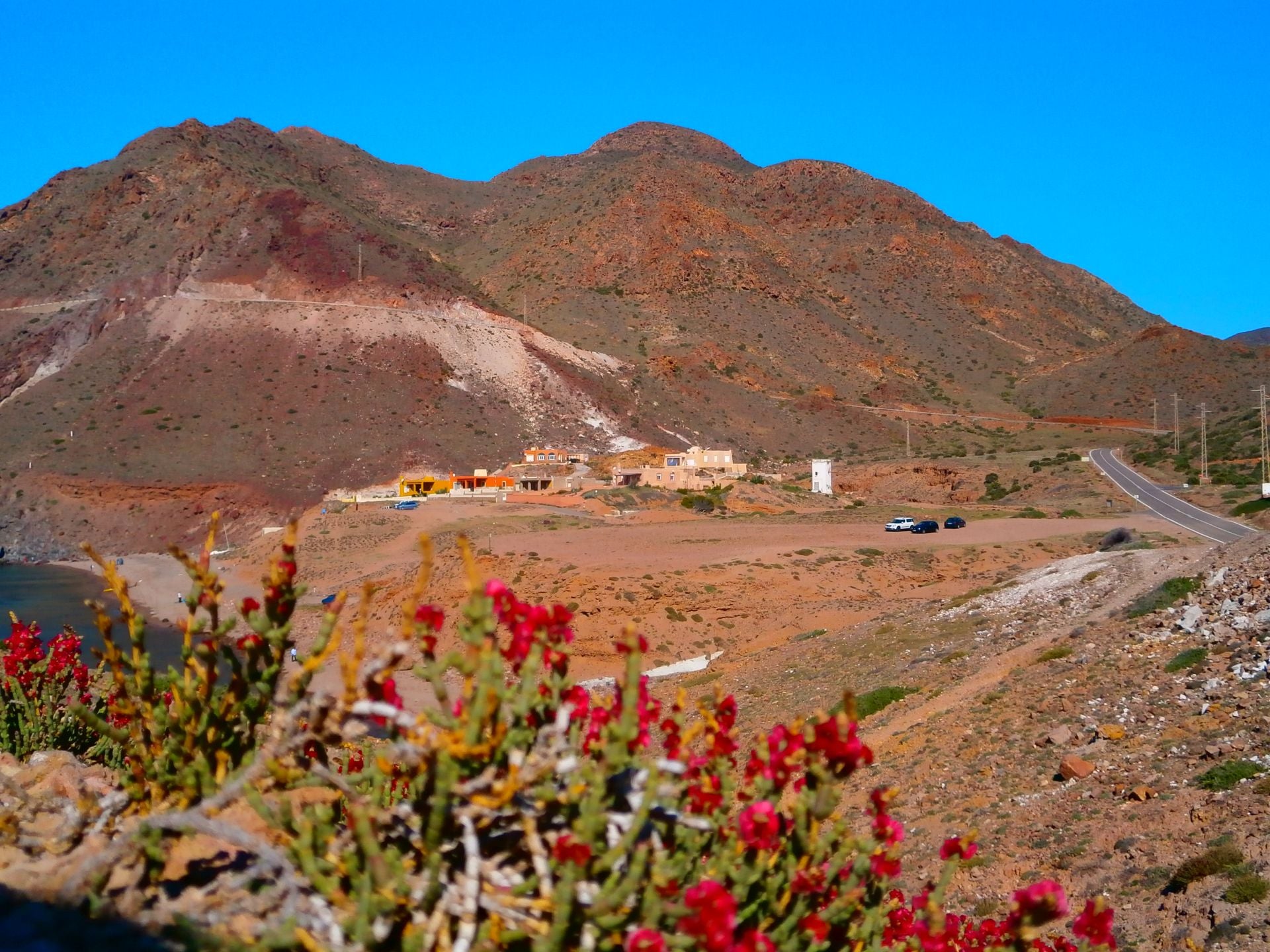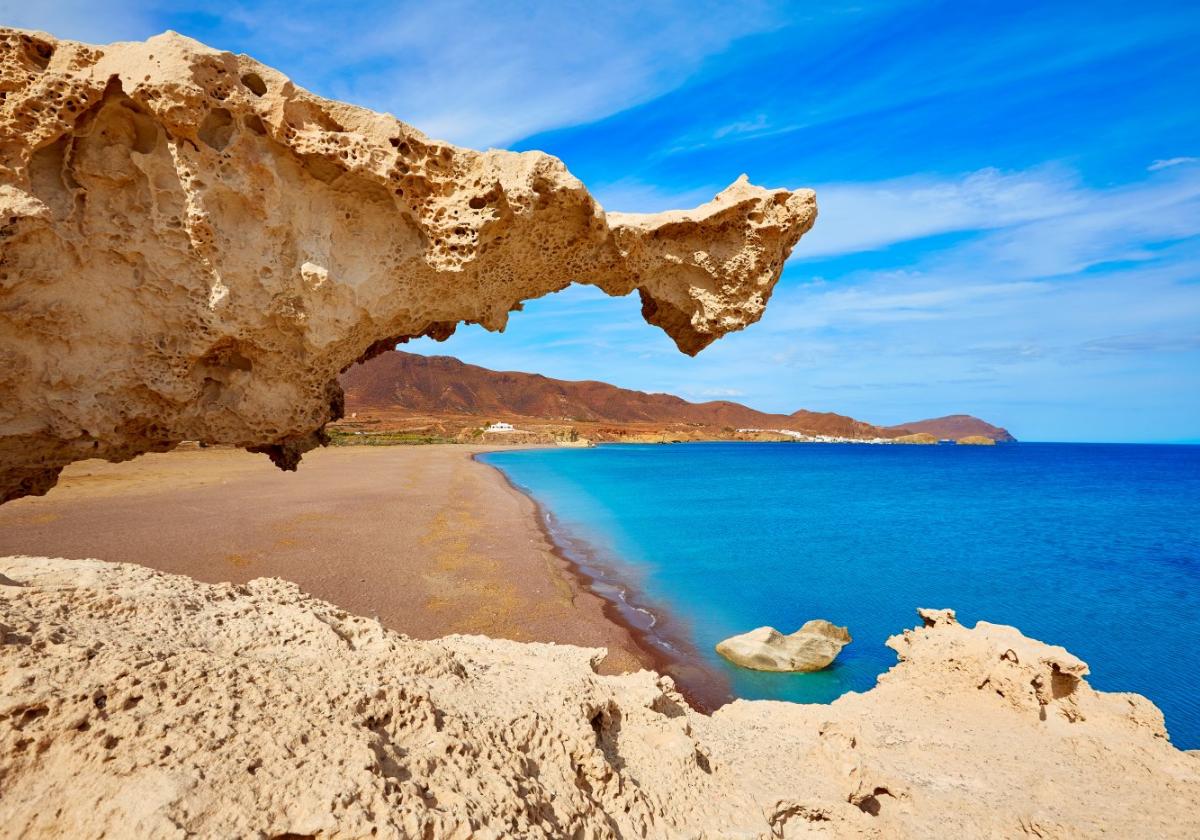Friday, 31 October 2025, 13:26
If you are looking for beaches that take you further than Malaga province’s coastline, then it’s worth taking a day trip to the east of Andalucía. Cabo de Gata is a stunning nature reserve, with gorgeous rocky and sandy beaches, surrounded by the municipalities of Níjar, Carboneras and Almeria.
It is a place known for locations such as the iconic Playa de Mónsul, where Steven Spielberg filmed Indiana Jones and the Last Crusade (1989), or Los Escullos, a famous fossil dune shaped like a crocodile’s gaping mouth, that was formed more than 100,000 years ago.
However, its value doesn’t just stop at sightseeing. Cabo de Gata’s volcanic complex is its most distinct feature; arguably the area’s crown jewel. One of its main characteristics is that it is almost entirely submerged, meaning that the volcanic rocks formed below water can only be seen above sea level in Cabo de Gata and on Alboran Island, a small islet.
It’s a site known for locations such as Los Escullos, a fossil dune shaped like a crocodile’s gaping mouth
Landscape
Its geology dates back 15 million years, where volcanic activity first took place, giving rise to the two main volcanic formations present in Cabo de Gata today: volcanic domes and boilers. Red, ochre and black tones dominate over the landscape. Additionally, gradual sea erosion has led to the creation of coastal depressions, shaping the nature park’s stunning lagoons and secluded beaches.
Moreover, these geographical depressions generate perfect wave conditions for all types of surfing – windsurfing, kitesurfing, longboard surfing. To the west of the town of San José, Playa de Genoveses is a perfect place for watersports, named after the Genevan fleet’s attempt to capture the province of Almeria when it was under Islamic rule. From the town of San José, it is a short hike through the cliffs until the trail opens up to the secluded beach, tucked away by eucalyptus trees.
Notably, although Playa de Genoveses is not classified as a nudist beach – unlike others along the coastline, such as the iconic Cala Media Luna or Cala Barronal – it’s common for nudists to frequent the area. If this isn’t what you’re looking for, the regions of Poniente and the Bay of Almeria are home to well-maintained resort beaches.
Kite surfing at the beach.
TA

Hikes
The most authentic way to get to know these diverse beaches, which are home to a population of more than 1,500 species of marine flora and fauna, is to embark on a hike. Many travellers have recommended trails that go from cove to cove, such as the 4.7km circular route between Agua Amarga and Enmedio cove.
After the steep and rocky ascent, you are rewarded with a private sandy beach and stunning views of Mesa Roldan hill and its lighthouse and castle. Longer routes, such as the 10.5km hike from Las Negras beach to Cala de San Pedro, are recommended to be done in the early mornings due to lack of shade.
Cabo de Gata’s unique geological features and climatology lend itself to being awarded Unesco World Geopark status in 2015. Additionally, it spans over 63 kilometres, making it the largest marine protected area of the European continental coast.
One of Cabo de Gata’s stunning hiking routes.
TA

Towns
As well as exploring the natural resources that Cabo de Gata has to offer, a number of nearby towns are worth a visit, especially if you are planning to stay for more than a day. The fishing village, San José, is considered to be the nature park’s capital.
Undeniably, its main activity is now tourism, but it’s still a charming town, with a laid-back population of around 800 people. The pier stretches out to the sea, and bohemian stalls and restaurants serving fresh fish and other typical Spanish cuisine line the streets.
Rodalquilar used to be an old mining village in the 19th and 20th century, and it is located in the heart of Cabo de Gata. Surrounded by a valley of the same name, this off-the-beaten-track area is a perfect place to enjoy a peaceful getaway. At the entrance, the old houses that used to belong to miners still stand, giving the village a sense of having been preserved in time. Additionally, eight kilometres away is the Cortijo del Fraile (friar’s farmhouse) – an abandoned manor house referenced in Andalusian playwright Federico García Lorca’s iconic Bodas de Sangre.
The area’s highlight would have to be El Playazo – one of the most beautiful beaches in Cabo de Gata – 400m long and 30m wide – making it a popular destination to visit. Atop a fossilised dune, the castle of San Ramón sits, a former defensive bastion built during the 18th century to defend Almeria from Barbary corsairs.
Unlike other beaches, the water is calm and the sand is fine and golden, making it an excellent choice for families with small children.
